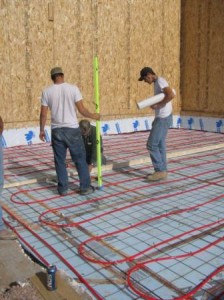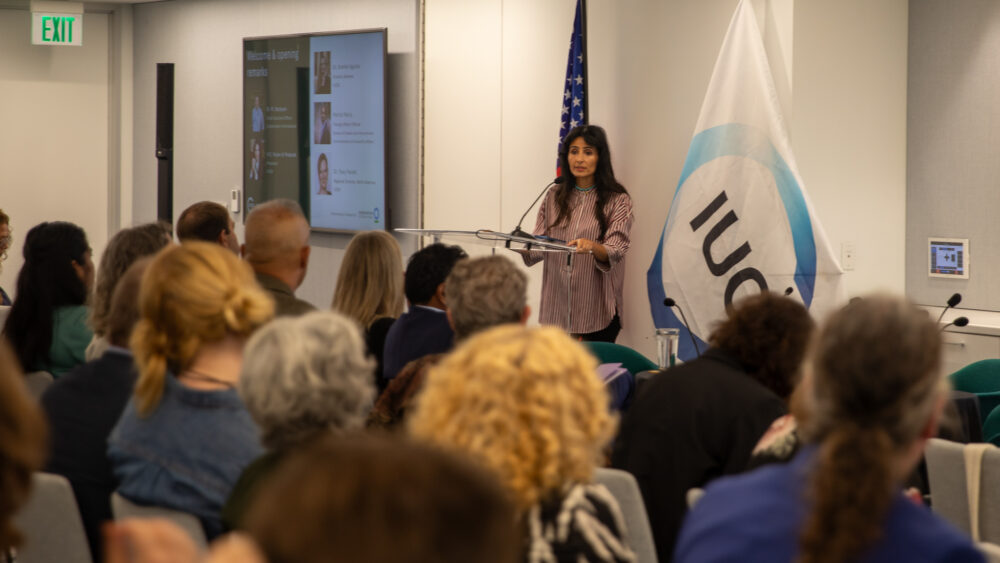We have much more to do and your continued support is needed now more than ever.
Taking Efficiency Off-Campus

In 2006, John Ely started the Green Construction Technology certificate program at Eastern Wyoming College in rural Torrington, WY. With a long-standing interest in green building and experience building a number of Energy Star certified, net-zero energy homes, John had a desire to teach others the skills to build healthy and energy-efficient homes. Before starting the program at EWC, John taught a similar green construction technology program at Laramie County Community College with fellow instructor and carpenter Tim Nyquist. Through the course of the program, students built 2 net-zero energy houses. The program has since been discontinued due to budget issues.
The Green Construction Technology program at EWC is an 11-month certificate program which incorporates class time with hands-on learning; about 10% class time and 90% on the job. Students spend Monday mornings in the classroom where they learn about green construction methods and read up on current literature in the field, though Ely explains that “really, the only way to learn construction is to do it,” so the rest of the school week the students work together to build a house to Energy Star requirements off campus. Ely claims that this program is the only Energy Star certified building program within the community college system, giving the students a unique opportunity to engage in installing and understanding energy-efficient building techniques.
In the process of building the class house, students learn a great number of green building techniques, including how to install solar photovoltaics, solar hot water heating, in-floor radiant heating, and how to control indoor air quality through the use of low VOC paints and non-invasive glues with water or latex bases. Since the program began in 2006, students have worked together to build 2 houses and are currently working on a third house. Once completed, the houses are sold and the money goes back to the college. The first two houses are both rated Energy 5 Star plus.
Garrett Travis, a student currently enrolled in the program, explains that he was drawn to the program because of its focus on green building and the value of a hands-on program. After completing the course, Garrett plans to move back to his hometown of Wray, CO, and continue working for a contractor that he worked for previously. He looks forward to incorporating the skills he’s learned through the Construction Technology program at EWC and adds that he believes “the skills and processes I have learned will become a new building standard.”
Garret represents a growing trend across the country of heightened interest in green building and energy efficiency. This year the program has seen its highest enrollment and Ely noted that even high school students are asking to shadow him and are planning to enroll in the program after completing high school. He explains that much of this interest is due to the fact that when his students graduate and go to work with a contractor, they have the ability to move up quickly by being an asset to “contractors who are looking to change to green but don’t know how.”
Unfortunately, despite the growing interest from students and trades people, programs like the one at EWC aren’t common in the rural west and schools are having a hard time weighing the cost of the program against what the school gets in return. Ely cites a lack of leadership and vision from administrations. Before coming to EWC, he had approached nearby Western Nebraska Community College to set up a similar program, but he changed targets when WNCC said it would take several years to get the program up and running.
Cost is also an issue: a new, outfitted work trailer of the type used by a general contractor costs EWC $100,000, and each student is issued a complete set of basic carpenters’ hand tools and rolling chest that is valued at about $900. (Students who complete the course are allowed to keep the tools, making them work-ready upon graduation.) After that initial investment, it costs roughly about as much per class as to build an Energy Star rated residence.
Due to budget issues, the EWC administration has put the Green Construction Technology program on a hiatus after its current semester. In its place, Ely will create a weatherization program which will begin in the fall of 2010. The weatherization program will teach students how to perform an in-depth assessment of an existing home and recommend how to make the home energy-efficient and healthy. The curriculum is still being developed and two grants have been written and approved to help with start-up costs to offset student expenses and training for instructors.
Though disappointed, Ely recognizes the importance of teaching weatherization of existing homes. “It’s a very important direction for EWC and community colleges to go, especially when we consider there are over 127,000,000 unsustainable houses in our housing stock. Many are an ecological disaster.” He hopes that training students on existing buildings will further the same goals that the green building program did: making homes safe, comfortable, and energy-efficient in the long term.






















